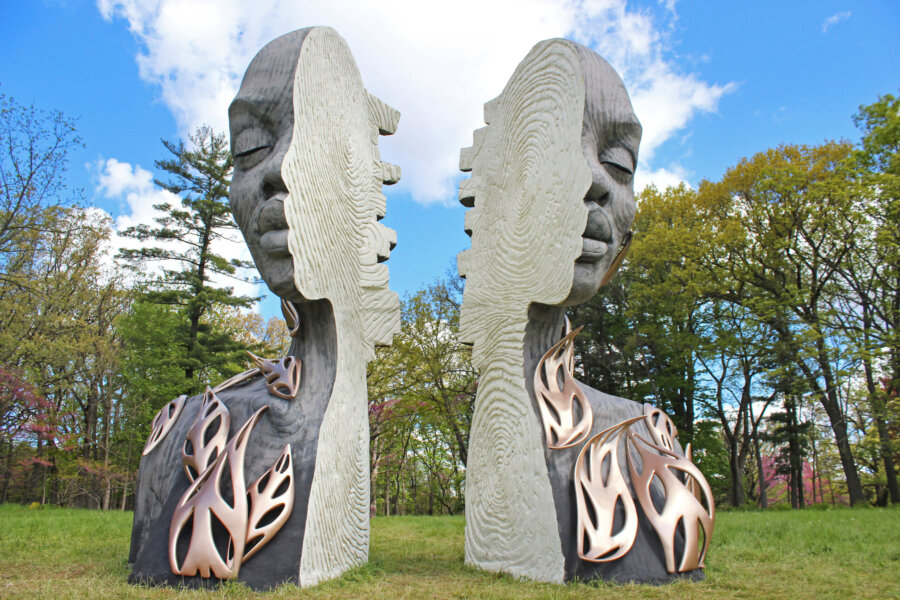On Misunderstanding Human Nature

When we ask what human nature is, the words themselves can be a cause of misdirection, as the word nature suggests that a complete answer to the question might be provided through rigorous enough understanding of human participation in “the natural world.” But this is not the case—because in human consciousness, both immanent (“natural”) and transcendent realms of meaning consciously meet and interpenetrate.
As a micro–cosmos, a human being does share, of course, in all of the strata of being that appear as phenomena in the dynamically emergent universe. Physical schemes provide the conditions and foundations of chemical laws that are organized by metabolic processes that ground human bodily health and activity; and these material strata of being can be examined through the methods of the natural sciences in terms of functions constitutive of human existence. Social sciences, then, study observable patterns of human behavior; and depth psychology and phenomenologies of perception, language, and inquiry yield accounts of the “higher” operations of human consciousness made possible by the manifolds of foundational and conditioning lower strata. But even all such fields together do not exhaust the realms of meaning that constitute “human nature”—because each person, like the cosmos it reflects, is constituted also by what transcends the world of space and time. Every human being is a person; and every person (every face, as Levinas would say) reveals the presence of a “beyond” that is irreducible to immanent forms and all of their developments and variables.
The Greek philosophers who discovered the transcendent ground to be Nous (Intellect)—thereby opening the universe to scientific analysis as “intelligible structure”—emphasized that human psyches could make such a discovery only because a part, or aspect, of each human psyche is itself nous; and that this human nous is a “participation” in divine Nous. (They also investigated at length what a “noetically well-ordered” existence would look like.) For them, as for adherents of each of the major Western and Eastern religious traditions, a proper exposition of human nature will acknowledge that in humans both worldly structures and the transcendent ground of order that ordains and sustains worldly structures are mixed in a sort of unity.
The question, then, that all these traditions set for ensuing generations is: how are we to understand the unique “mixture” of immanence and transcendence that a human being is?
In Western cultures, within the vast array of attempts to take up and respond to this question, one can distinguish two basic modes of inquiry and expression.
One of these entails increasingly nuanced depictions and descriptions of humans as participants in both worldly and transcendent reality. One can trace this stream of exploration from Plato and the writers of the Hebrew Scriptures through such eminent figures as Augustine, Dante, Goethe, Shakespeare, and Dostoevsky, and on up to literary modernists including T. S. Eliot and Proust.
Complementarily, there is a stream of philosophically explanatory accounts of human being as a “site” co-constituted by both worldly structures and transcendent presence, beginning with Aristotle’s “science of the human” and continuing through later classical and medieval expansions and revisions (including those of Arabic philosophy). In its initial, “classical” scientific mode, such explanation aimed at establishing knowledge of what is necessary and unvarying about humans, abstracting from circumstantial contingencies, developmental particularities, and other variable factors that make individuals what they concretely are. Eventually, though, the modern “turn to the subject”—associated with philosophers such as Descartes, Kant, Hegel, and Husserl—elicited systematic explanatory accounts attempting to take into consideration the developmental and concrete complexity of human beings. The most successful of such accounts to date, in my view, has been that of Bernard Lonergan.
But whatever oversights may be attributed to any of these descriptions or explanations of human existence, none of them commits the elementary philosophical blunder of presuming that it makes sense to think of human existence as a merely worldly mode of being—a blunder made by many influential thinkers, along with everyday people of “common sense,” from the time of the classical Greeks onward. And this is an error that has infected modern thinking in a peculiarly virulent way—partly as a result of the successes of the modern natural sciences in explaining the processes of the spatiotemporal world and of the proliferation of sophisticated tools that these successes have made possible. The overwhelming fabulousness of modern explanatory and technical involvement with all that is worldly has contributed to making “immanentist” interpretations of human nature hugely alluring and popular.
Already in the eighteenth century, Enlightenment enthusiasm at the prospect of the natural sciences producing a complete causal explanation of human nature and behavior led to such visions as that presented in La Mettrie’s 1748 work Man a Machine (L’homme machine). More recently, in the same immanentist vein, the evolutionary biologist E. O. Wilson has written that a proper worldview would be based on the assumption that “all tangible phenomena, from the birth of the stars to the workings of social institutions are materially based and ultimately reducible . . . to the laws of physics” (italics mine).
Probably the most popular contemporary scientistic-immanentist trend in thinking about people is to envision humans as merely supremely sophisticated computers.
Immanentist conceptions of human nature come in other modes, however, than imaginative reductions of humans to material processes that would, in principle, be fully explainable by one or another of the natural sciences (whether the interpreter’s crown be accorded to physics, chemistry, neuroscience, or evolutionary biology). There are also, for example, sociological immanentisms, where the entire meaning of existence is interpreted as the product of social forces and influences, and the value of individuals identified with how much they contribute (or might contribute) to the survival and functioning of a society. This is the kind of “sociological reduction” presented by Bolshevik ideology, where the purpose and value of persons were judged in terms of their contributions to the creation of “communist society.”
The blunder of immanentism doesn’t have to take such severe forms as physicalism, or evolutionary biologism, or —what should it be called?—reductive sociologicalism. For it is possible to honor the psychological complexities of individuals as individuals, each of whom is a center of value; to recognize humans as free to a significant degree; to acknowledge the “interiority” of human cognitional process as an autonomous level of being; and still to conceive of human nature, along with reality as a whole, as merely “immanent”—that is, as consisting wholly of spatiotemporal identities, characteristics, processes, and events. Every person, in this case, is regarded as a worldly thing among other worldly things, in a world that is imagined to be the all-encompassing “thing” that contains all the things inside it.
The basic problem with all immanentist accounts is that their explanations of human nature ignore the fact that human existence is participation in a cosmos, and that the notion of “immanence” as the whole of reality is the product of a philosophical oversight. The cosmos can indeed be differentiated into immanent and transcendent dimensions; but it remains the one wholeness of the cosmos with its originating, sacred ground. Whatever else constitutes and defines it, “human nature” is first of all conscious participation in the narrative completeness of meaning that is the cosmos.
Immanentist accounts presume—often implicitly—one or another level in the hierarchy of observable being to be the “ultimate” basis, or ground, of human nature. But if one is faithful to remembrance of the cosmos, there are only two proper answers as to the ground of human existence. Either the ground is the enduring gods and goddesses, expressed typically in cosmological myth; or it is the transcendence identified through “spiritual breakthroughs” (Voegelin) such as the discovery of the Tao; of the Hindu Brahman; of the Greek Nous; of the God of Judaism; of the Triune God of Christianity; of the Allah of Islam. In each of these breakthroughs, human consciousness—and thus human nature—finds itself to be co-constituted by the transcendent reality in which it participates. So in each of the traditions arising from them, wisdom entails acknowledging that “human nature” transcends the very Nature that the modern sciences continue to explain and exploit so successfully.




